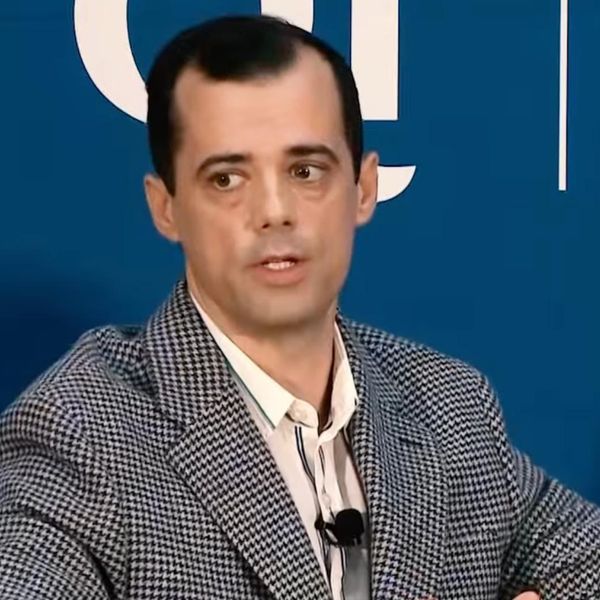In college and graduate school from 1965 until 1976, I and many other students learned a great deal about the origins of three worldwide struggles: the two world wars and the ongoing Cold War. Perhaps a dearth of that kind of learning is why no one is talking about the real historical parallel to the current crisis over Ukraine: the Berlin crisis of 1958-1962.
Western leaders and the press see Putin’s threats towards Ukraine the way they saw Nikita Khrushchev’s threats towards West Berlin: as a possible imminent territorial grab. In fact, Khrushchev did not want war or new territory, and Putin may not either. Putin, like Khrushchev, may be using a western military vulnerability for two purposes: to sow dissension in the western alliance and to force NATO to drop pretensions they see as a threat to their security.
The United States, Great Britain, and France occupied West Berlin in 1945 when the Third Reich fell. As long as they and the U.S.S.R planned to create a new all-German government, it didn’t much matter that West Berlin was well inside the Soviet occupation zone, but in 1948, when Britain and the U.S. took unmistakable steps towards setting up a separate West German state, Stalin responded by blockading land access to the city. The U.S. supplied it by air for a year, and Stalin gave up the blockade. In 1949 the Federal Republic and the German Democratic Republic were separately formed, each claiming to be the sole legitimate representative of the German people.
By 1955, West Germany had joined NATO, and its leader Konrad Adenauer was taking very aggressive positions supported by his protector the United States. Not only did he demand that the East German government disappear, he also refused to recognize Germany’s 1945 losses of territory to Poland and the U.S.SR. He also hoped to secure nuclear weapons for Germany — a goal which President Eisenhower was inclined to grant. By 1958, Soviet leader Nikita Khrushchev decided to threaten West Berlin once again in order to force the West to accept the existence of East Germany and to give up the idea of nuclear weapons for West Germany.
Late that year Khrushchev announced his intention to sign a separate peace treaty with East Germany that would end western rights in West Berlin, and turn control of access to it over to the East Germans. He gave the West six months to agree to his terms.
The United States, Britain, and France could easily have lived with such a settlement and to some extent would have welcomed it, but Washington regarded Adenauer as a crucial pillar of NATO and would not impose terms on him. The Eisenhower Administration immediately painted Khrushchev’s demand as an attempt to add West Berlin to the Soviet sphere and pledged and prepared to fight nuclear war, if necessary, to preserve the status quo.
Khrushchev’s deadline passed in 1959 without incident, but he renewed his demands in June 1961 when he met President John F. Kennedy. The young president had some ideas of offering Khrushchev recognition of East Germany, but he did not yet dare do so, and he opted for a bigger conventional presence in West Germany and new threats of nuclear war for Berlin to try to deter Khrushchev.
The crisis dragged on into 1962, and the installation of Soviet nuclear missiles in Cuba aimed to force the U.S. to give way over the recognition of East Germany, Germany’s frontiers, and the issue of nuclear weapons for West Germany. That plan failed when Kennedy convinced the Soviets to withdraw those missiles, but in the détente that followed, Khrushchev got a major piece of what he wanted. The Test Ban Treaty — which Kennedy forced a reluctant West German government to sign — took away the chance of West Germany developing its own nuclear weapons. A few years later, the Non-proliferation Treaty sealed that deal.
Two weeks ago, Russian academic Fyodor Lukyanov explained in a Quincy Institute forum that Putin has not really mobilized 150,000 troops to invade Ukraine — just as Khrushchev did not really want to try to take West Berlin by force. (He too ignored the parallel.) Instead, he, like Khrushchev, wanted to force NATO to talk about the general security situation on his border and to head off what he regards as future threats — specifically, Ukraine’s possible accession to NATO.
NATO, meanwhile, has painted itself into a corner in the same way that it did in 1958-1962. It didn’t really want nuclear weapons for West Germany and German reunification then, and it doesn’t really want immediate Ukrainian entry into NATO now, but it is committed eventually to achieving that goal in principle and doesn’t want to back down under threat. And as in 1958-1962, the Russian initiative is creating considerable disagreement among major NATO partners, some of whom do not want to wreck relations with Russia over Ukraine. Such disagreement is surely one of Putin’s goals as well, just as it was one of Khrushchev’s.
NATO, led as always by the United States, is now preparing for an economic and cyber war against Russia, just as it prepared for a nuclear war in 1958-62. This new conflict — like the earlier one — is certainly not necessary and may well not take place. To reduce tensions and ease the crisis, NATO has to find a formula involving both Ukraine and weaponry in the easternmost parts of NATO that will allow Putin to feel that he has secured some of what he wants. That certainly could include an agreement on the war Ukraine has been waging against Russian-assisted separatists, as well. We must remember, as Clausewitz reminded his readers two centuries ago, that the ultimate objective is always to bring about peace. As in 1963-75, easing the crisis would turn the competition between Putin and the West into a political one, and that is a competition that the West should be able to win.
















